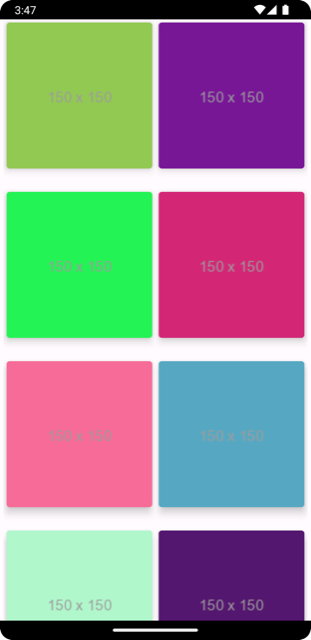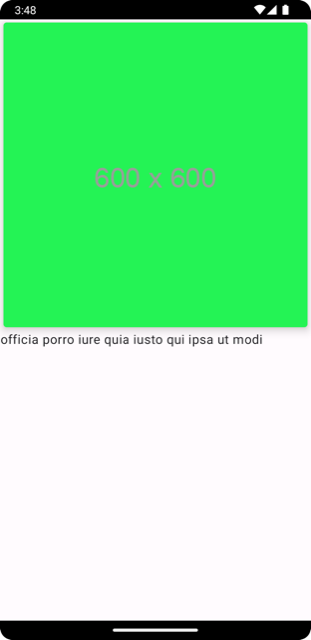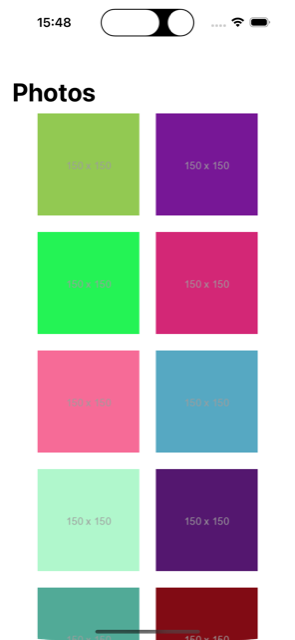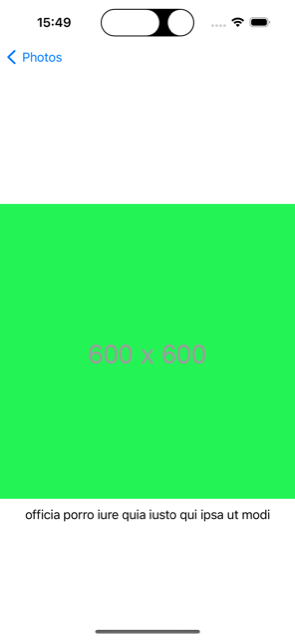Hello Kotlin Multiplatform
What better way to start the new year than trying out the Kotlin Multiplatform.
I wanted to try KMM for a very long time now. But first I wanted to get enough knowledge of Kotlin and the Android development environment. Which I think I’ve sort of good enough now. So let’s take a quick look at KMM.
Setup
To verify if everything is in order we can use the kdoctor.
kdoctor
...
Conclusion:
✓ Your operation system is ready for Kotlin Multiplatform Mobile Development!
And then there is the amazing KMM plugin for Android Studio which provides a nice template for creating a new project from Android Studio.
Next update the dependencies by updating the libs.versions.toml. The idea here is to list all of the libraries regardless of the platform, we will get the chance later to add libraries to targets later on.
[versions]
ktor = "3.0.3"
kotlinxSerializationJson = "1.6.3"
coroutines = "1.9.0"
coil = "3.0.4"
androidx-navigation = "2.7.7"
[libraries]
ktor-client-core = { module = "io.ktor:ktor-client-core", version.ref = "ktor" }
ktor-client-okhttp = { module = "io.ktor:ktor-client-okhttp", version.ref = "ktor" }
ktor-client-darwin = { module = "io.ktor:ktor-client-darwin", version.ref = "ktor" }
ktor-serialization-kotlinx-json = { module = "io.ktor:ktor-serialization-kotlinx-json", version.ref = "ktor" }
ktor-client-content-negotiation = { module = "io.ktor:ktor-client-content-negotiation", version.ref = "ktor" }
kotlinx-coroutines-core = { module = "org.jetbrains.kotlinx:kotlinx-coroutines-core", version.ref = "coroutines" }
kotlinx-coroutines-android = { module = "org.jetbrains.kotlinx:kotlinx-coroutines-android", version.ref = "coroutines" }
kotlinx-serialization-json = { module = "org.jetbrains.kotlinx:kotlinx-serialization-json", version.ref = "kotlinxSerializationJson" }
coil-kt-compose = { module = "io.coil-kt:coil-compose", version.ref = "coil" }
coil-compose = { module = "io.coil-kt.coil3:coil-compose", version.ref = "coil" }
coil-network-okhttp = { module = "io.coil-kt.coil3:coil-network-okhttp", version.ref = "coil" }
androidx-navigation-compose = { module = "androidx.navigation:navigation-compose", version.ref = "androidx-navigation" }
[plugins]
kotlin-serialization = { id = "org.jetbrains.kotlin.plugin.serialization", version.ref = "kotlin" }
Next we first need to add the dependencies for the shared library in shared/build.gradle.kts.
plugins {
// ...
alias(libs.plugins.kotlin.serialization)
}
kotlin {
// ...
sourceSets {
commonMain.dependencies {
implementation(libs.ktor.client.core)
implementation(libs.ktor.serialization.kotlinx.json)
implementation(libs.ktor.client.content.negotiation)
implementation(libs.kotlinx.coroutines.core)
implementation(libs.kotlinx.serialization.json)
}
androidMain.dependencies {
implementation(libs.ktor.client.okhttp)
}
iosMain.dependencies {
implementation(libs.ktor.client.darwin)
}
}
}
// ...
Notice how we provide different ktor engines per platform. So okhttp for android and darwin for iOS.
Next, for the Android app we need to update the PhotoAppAndroidApp/build.gradle.kts
// ...
dependencies {
implementation(projects.shared)
implementation(libs.compose.ui)
implementation(libs.compose.ui.tooling.preview)
implementation(libs.compose.material3)
implementation(libs.androidx.activity.compose)
implementation(libs.kotlinx.coroutines.android)
implementation(libs.coil.compose)
implementation(libs.coil.network.okhttp)
implementation(libs.androidx.navigation.compose)
}
Regarding iOS app, we can simply open the PhotoAppApple/PhotoAppApple.xcodeproj and update the settings if required. For example I was getting some Java errors due to Xcode unable to find JAVA_HOME so I had to manually update the Build Phase > Run Script to
export JAVA_HOME="/opt/homebrew/opt/openjdk"
cd "$SRCROOT/.."
./gradlew :shared:embedAndSignAppleFrameworkForXcode
Networking
Since networking is part of the shared module, we can have the entire network layer as
package com.whackylabs.photoapp
@Serializable
data class Photo(
val albumId: Int?,
val id: Int?,
val title: String?,
val url: String?,
val thumbnailUrl: String?
)
package com.whackylabs.photoapp
class NetworkService {
private val client = HttpClient() {
install(ContentNegotiation) { json() }
}
suspend fun photos(): List<Photo> {
return client
.get("https://jsonplaceholder.typicode.com/photos")
.body()
}
}
Android UI
The Android UI can be built with the regular Jetpack compose
package com.whackylabs.photoapp.android
class MainActivity : ComponentActivity() {
override fun onCreate(savedInstanceState: Bundle?) {
super.onCreate(savedInstanceState)
setContent {
MyApplicationTheme {
Surface(
modifier = Modifier.fillMaxSize(),
color = MaterialTheme.colorScheme.background
) {
val scope = rememberCoroutineScope()
val navController = rememberNavController()
var photos: List<Photo> by remember { mutableStateOf(emptyList()) }
LaunchedEffect(true) {
scope.launch {
photos = try {
NetworkService().photos()
} catch (e: Exception) {
emptyList()
}
}
}
NavHost(navController = navController, startDestination = "home") {
composable("home") {
PhotoGridView(
onSelectPhoto = { navController.navigate("photos/${it.id}") },
photos = photos
)
}
composable("photos/{id}") {
val photoId = it.arguments?.getString("id") ?: "0"
val photo = photos.first { it.id.toString() == photoId }
PhotoCardView(
photoUrl = photo.url,
photoTitle = photo.title,
modifier = Modifier
.padding(4.dp)
.fillMaxWidth()
.aspectRatio(1f)
)
}
}
}
}
}
}
}
package com.whackylabs.photoapp.android
@Composable
fun PhotoCardView(
photoUrl: String?,
photoTitle: String?,
modifier: Modifier = Modifier
) {
Column {
Card(
modifier = modifier,
shape = MaterialTheme.shapes.medium,
elevation = CardDefaults.cardElevation(defaultElevation = 8.dp)
) {
AsyncImage(
model = photoUrl,
contentDescription = photoTitle,
contentScale = ContentScale.Crop,
modifier = Modifier.fillMaxWidth(),
)
}
Text(photoTitle ?: "")
}
}
package com.whackylabs.photoapp.android
@Composable
fun PhotoGridView(
onSelectPhoto: (Photo) -> Unit,
photos: List<Photo>,
modifier: Modifier = Modifier,
contentPadding: PaddingValues = PaddingValues(0.dp),
) {
LazyVerticalGrid(
columns = GridCells.Adaptive(150.dp),
modifier = modifier.padding(horizontal = 4.dp),
contentPadding = contentPadding,
) {
items(items = photos, key = { photo -> photo.id ?: 0 }) { photo: Photo ->
Surface(onClick = { onSelectPhoto(photo) }) {
PhotoCardView(
photoUrl = photo.thumbnailUrl,
photoTitle = null,
modifier = Modifier
.padding(4.dp)
.fillMaxWidth()
.aspectRatio(1f)
)
}
}
}
}


iOS UI
Similarly the iOS counterpart can be built with SwiftUI
@main
struct iOSApp: App {
var body: some Scene {
WindowGroup {
ContentView()
}
}
}
struct ContentView: View {
@State var photos: [Photo] = []
let columns = [
GridItem(.flexible(), alignment: .trailing),
GridItem(.flexible(), alignment: .leading),
]
var body: some View {
NavigationStack {
PhotoGridView(photos)
.navigationTitle("Photos")
.navigationDestination(for: Photo.self) { photo in
PhotoCardView(
photoUrl: photo.url,
photoTitle: photo.title
)
}
}
.task {
do {
self.photos = try await NetworkService().photos()
} catch {
self.photos = []
}
}
}
}
struct PhotoCardView: View {
var photoUrl: String?
var photoTitle: String?
var body: some View {
VStack {
AsyncImage(url: photoUrl.flatMap(URL.init)) { image in
image
.resizable()
.scaledToFit()
} placeholder: {
ProgressView()
}
Text(photoTitle ?? "")
}
}
}
struct PhotoGridView: View {
var photos: [Photo] = []
init(_ photos: [Photo]) {
self.photos = photos
}
let columns = [
GridItem(.flexible(), alignment: .trailing),
GridItem(.flexible(), alignment: .leading),
]
var body: some View {
ScrollView {
LazyVGrid(columns: columns) {
ForEach(photos, id: \.id) { photo in
NavigationLink(value: photo) {
PhotoCardView(photoUrl: photo.thumbnailUrl, photoTitle: nil)
.frame(width: 150, height: 150)
}
}
}
}
}
}


Conclusion
I really love the vision of Kotlin Multiplatform. It helps with keeping all the business logic in one place while allowing the platform native UI. So you would love near to nothing. I also like it allows us app developers to use all the latest and greatest each platform has to offer. Like Jetpack Compose, Swift UI on the UI side of things while kotlin coroutines that get nicely mapped to Swift async-await API.
The only headache I had was with dealing with errors related to java vm. But I’m really looking forward to KMM becoming more mainstream.
The code from this experiment is available at github.com/chunkyguy/PhotoApp/tree/master/kmm